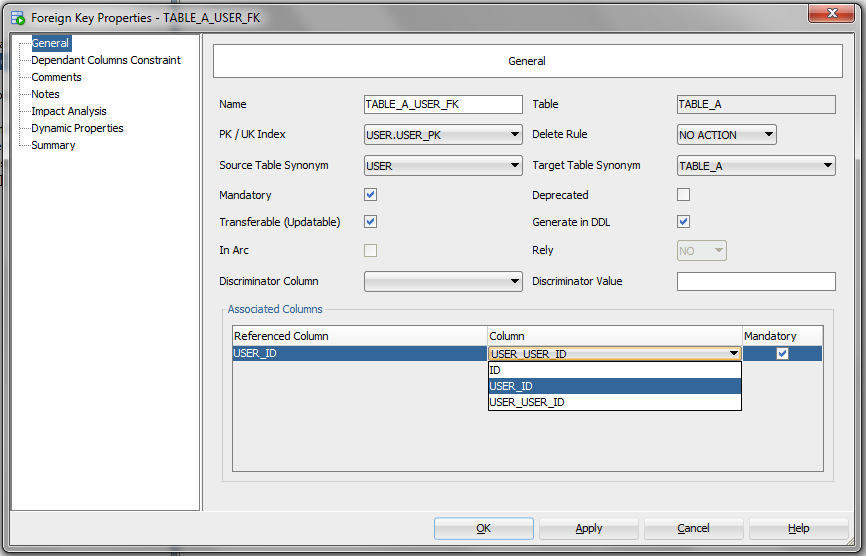

The columns which compose the foreign key accept null values.Columns, attributes and constraints are always added to the destination table (last selected one – tableB in the picture above) in order to represent the relationship.The column propagation is available for this kind of relationship and depends on the cardinality combination used as seen below: In order to ensure this uniqueness a unique constraint is created and assigned to the foreign key columns in tableB. The restriction here is that two different items tableB can't reference the same item on tableA.

In practice, foreign key columns in tableB are filled with the values of primary key columns of tableA. The semantics of this relationship is: “an item in table A has linked to it one item of table B”. In the next subsections all relationship types will be detailed. In newer versions of the tool the crow's foot is the default notation. In pgModeler relationships can be represented in two different notations: _ classical entity-relationship notation_ and _ crow's foot notation_ (see the image below). The cardinality affects directly all the objects generated by the relationship. The attributes are converted into columns when the relationship is validated and connected to the tables.įinally, tables can have an optional or mandatory participation in the relationship known as cardinality. Relationships can have their own attributes and constraints where these latter are obligated to be associated to the former ones. There are two special relationships that are created automatically in certain cases and cannot have some of their attributes handled directly by the user: foreign key generated relationships (in short, fk relationships) and relationships between tables and views which are used only to denote the dependency of the view to the linked table. Normally these objects cannot be modified directly and in some cases pgModeler will raise errors if the user try any operation like delete or modification on them. Columns propagated by the relationships are automatically named and graphically represented in different format (by default they are the ones with a green text color and italic font style). In order to provide easiness and flexibility when linking tables pgModeler implements nine different relationship types each one with its proper semantics, being them: one-to-one ( 1:1), one-to-many ( 1:n), many-to-many ( n:n), self relationship, generalization or inheritance, copy, foreign key generated relationship, dependency, identifier and partitioning.įor some kind of relationships ( 1:1, 1:n, n:n) there is a mechanism called column propagation which automatically creates columns and constraints in one of the involved tables. Relationships are the entities used to represent the link between two tables or between a table and a view.


 0 kommentar(er)
0 kommentar(er)
